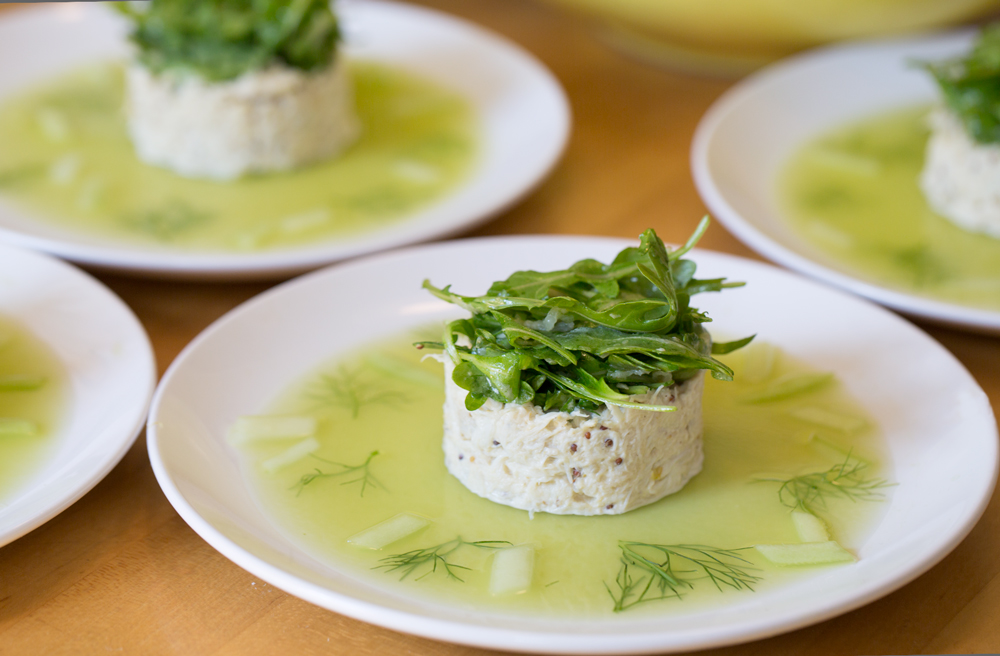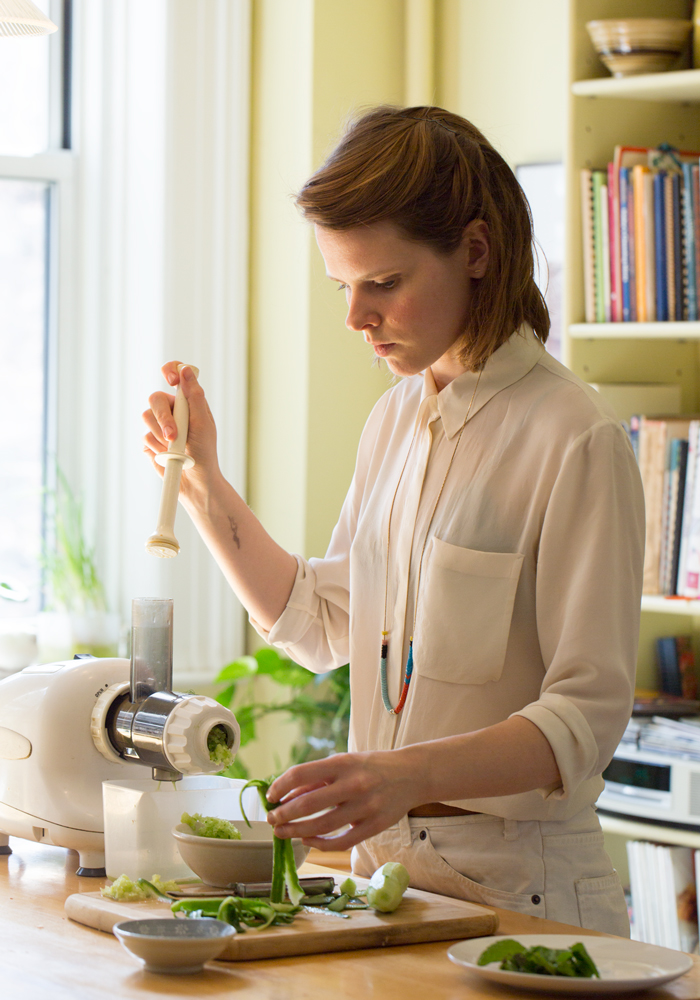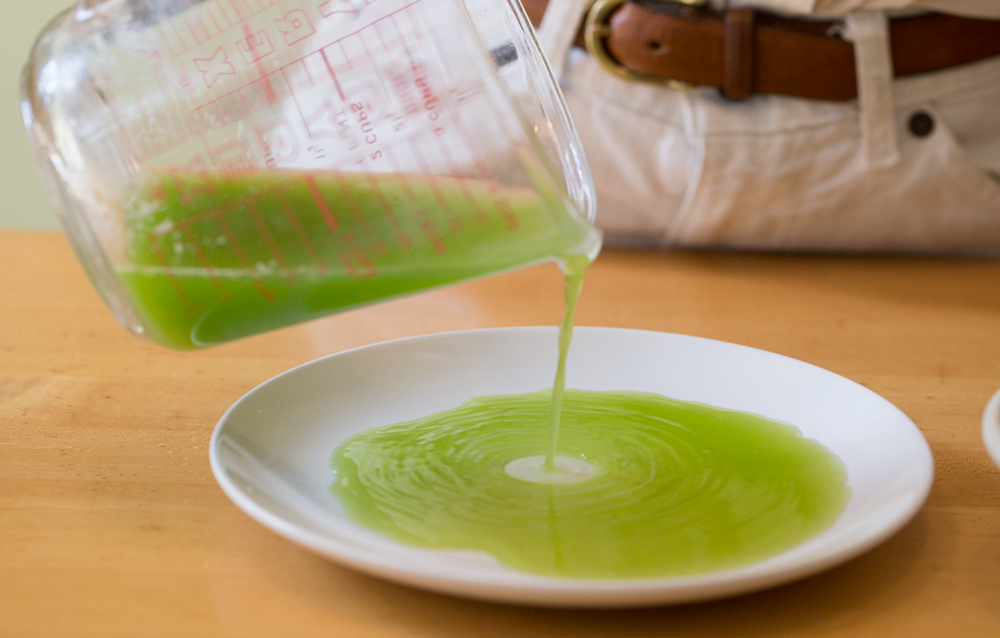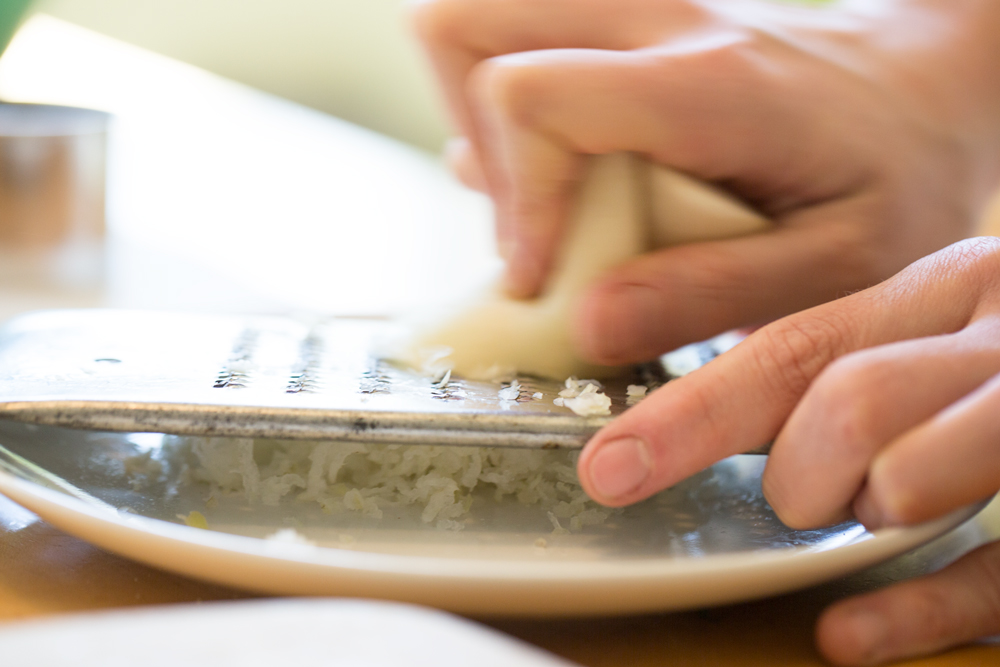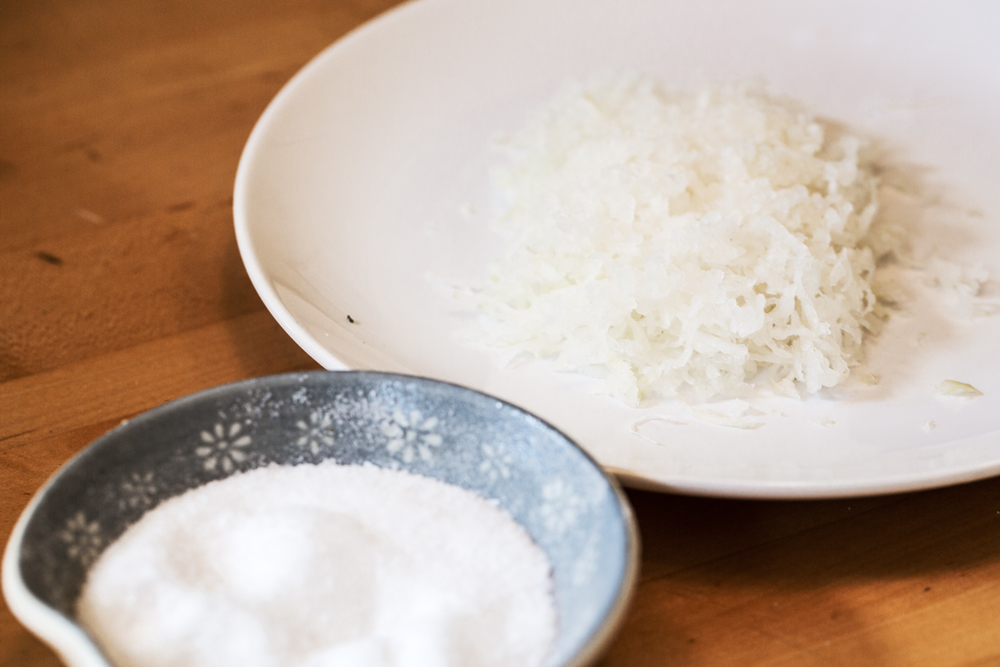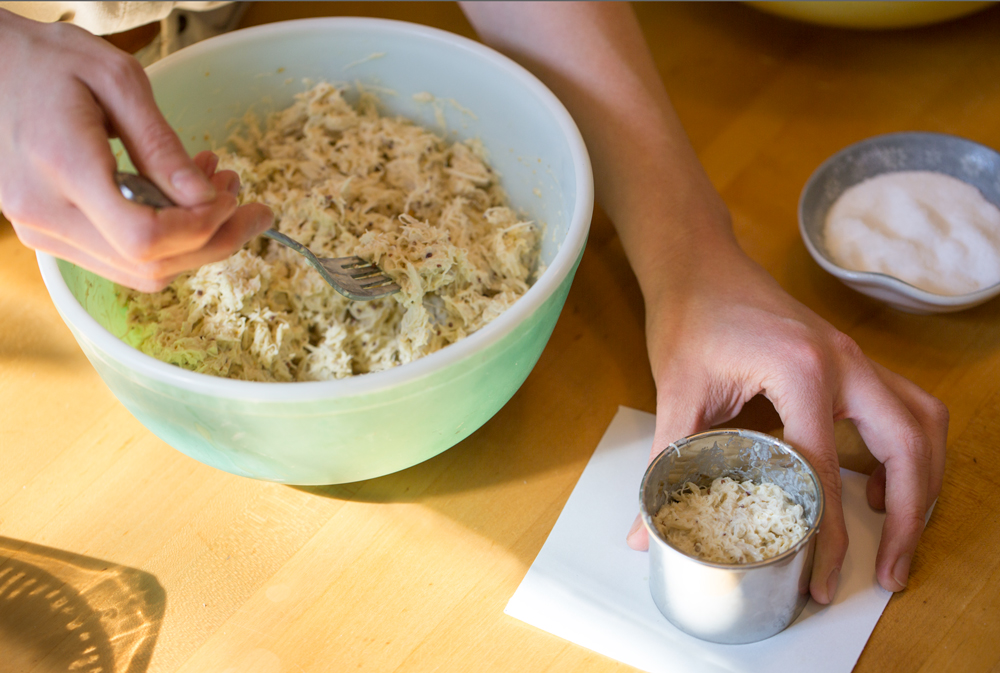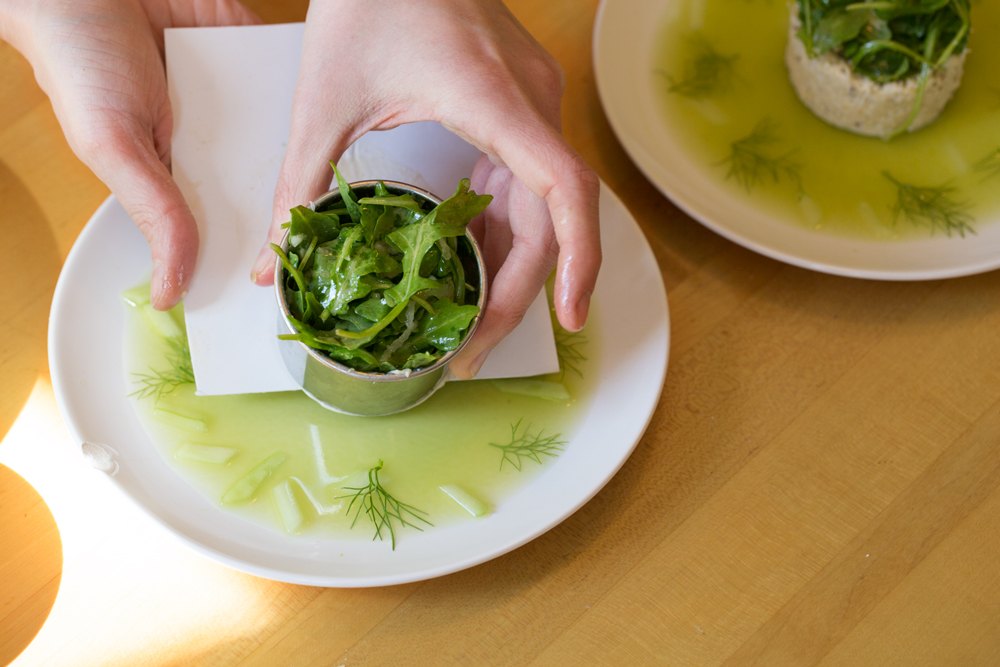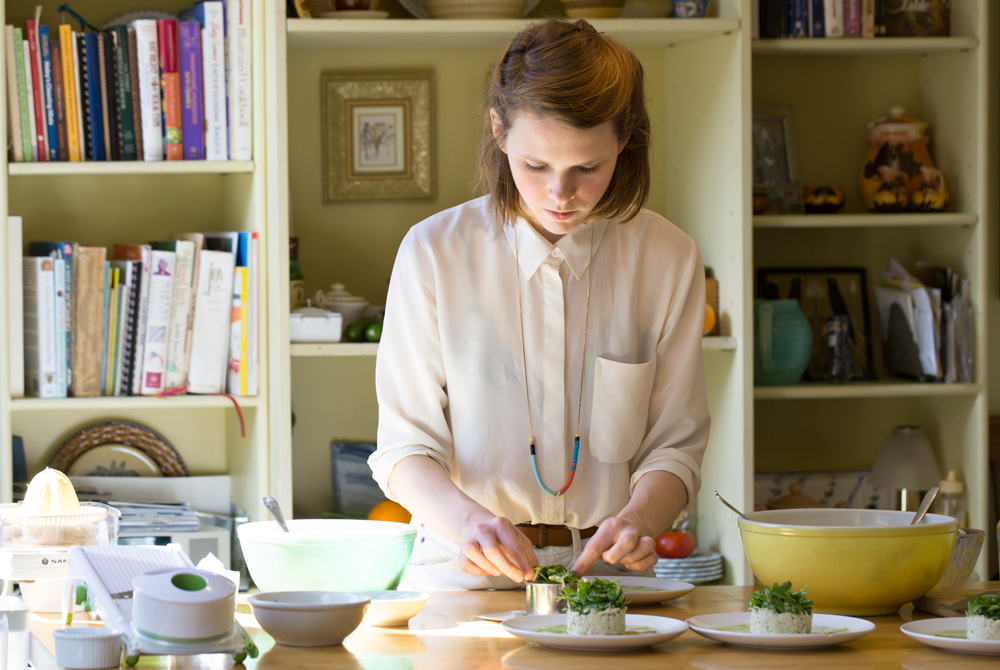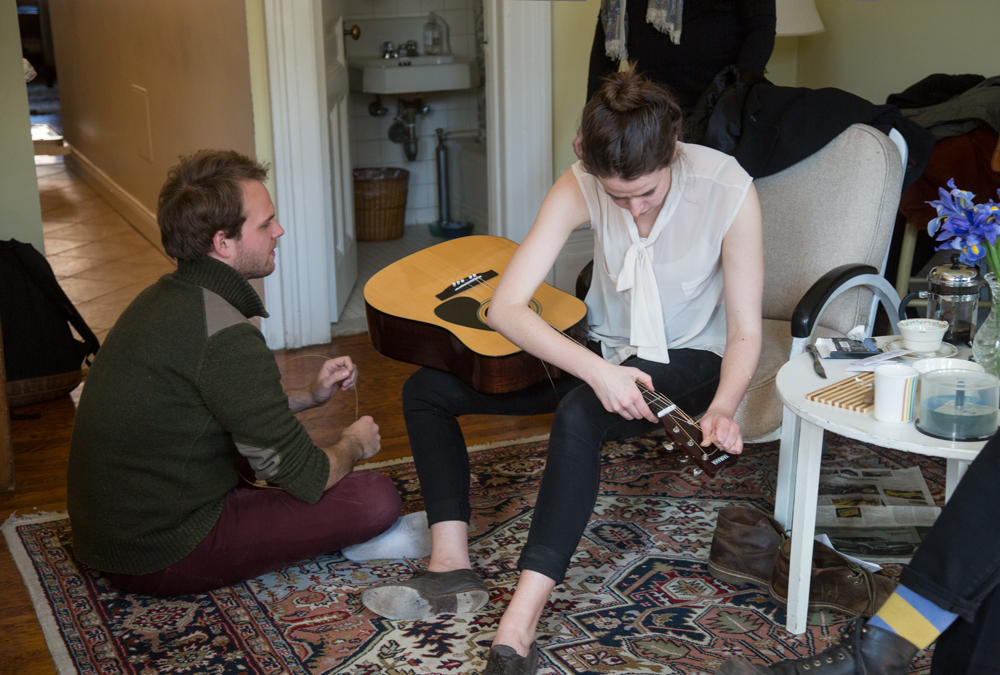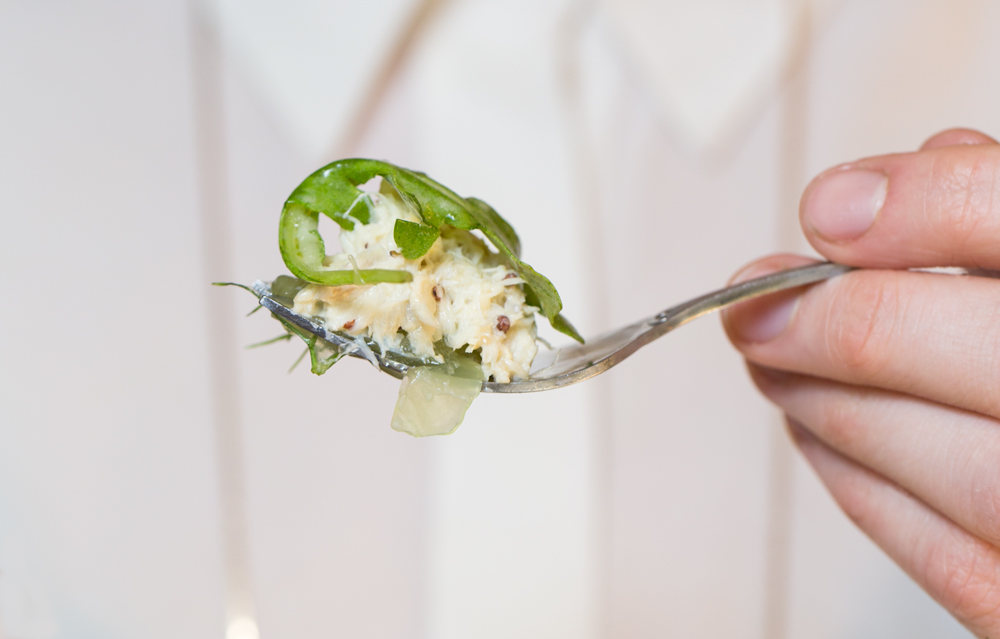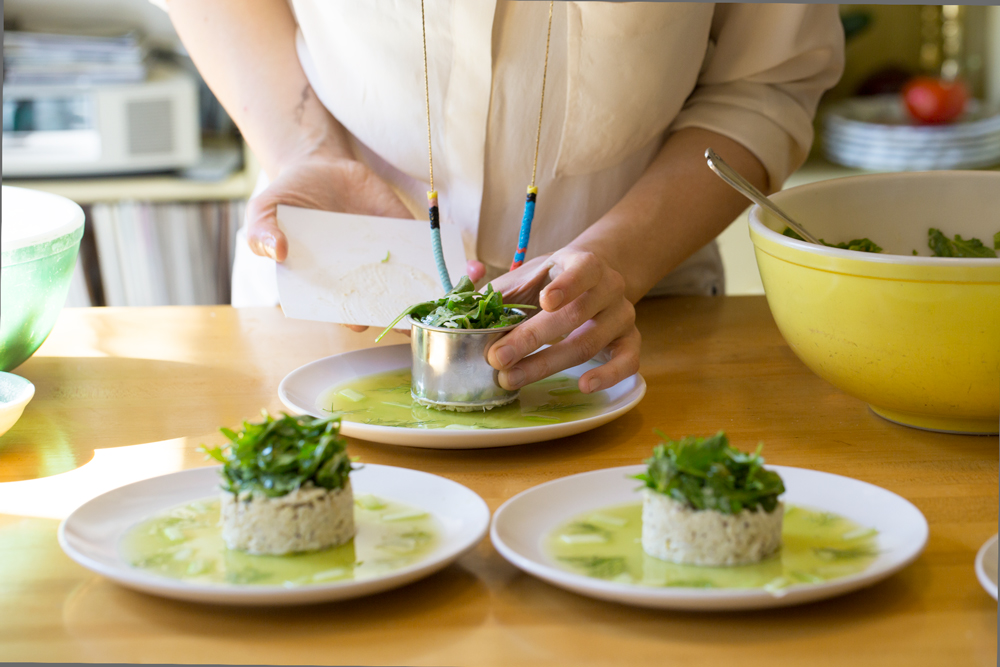POSTED UNDER
- Party Salad,
- SUMMER
INGREDIENTS
- arugula,
- cucumber,
- cucumber juice,
- dill,
- gelatin,
- heavy cream,
- jello,
- lump crab,
- mustard
RECIPE
DIFFICULTY
HARD
SERVES
6
PREP TIME
120 MINS
Cucumber Gelée
-
1cupfresh cucumber juice (medium cucumbers, peeled and seeded - save a few peels for color)
-
1 1/2tspgelatin (1/2 a pack)
-
1tsbhot water
-
1/2tspsalt
-
1tspfresh lemon juice
-
1/2bunchfresh dill, stems removed
-
1/2cucumber (peeled & seeded) for diamonds
Crab
-
1/2cupheavy cream
-
2tspDijon mustard
-
Kosher salt & ground white pepper
-
12oz.container of cooked lump crabmeat
Arugula Salad
-
2tbsolive oil
-
1/2tspDijon Mustard
-
2tsbgrated fresh daikon radish
-
2cupsbaby arugula or microgreens
-
white pepper & kosher salt to taste
POSTED UNDER
- Party Salad,
- SUMMER
INGREDIENTS
- arugula,
- cucumber,
- cucumber juice,
- dill,
- gelatin,
- heavy cream,
- jello,
- lump crab,
- mustard
Cassandra Jenkins and I studied at RISD together. She recently reached out to let me now she was a fan of the blog, and l soon discovered that I was a fan of her music (she is playing at the Knitting Factory May 27th). Her sound is informed by simple country melodies and folk tales, sparse and minimalist, deferential to her own musical roots, but fiercely contemporary.
Cassandra was born into music. Her parents met in a local production of Guys and Dolls, they fell in love, started a band, and went out on the road together. They played anywhere and everywhere, from road houses to cruise ships. They had a casino gig in Atlantic City when Cassandra was born, so her first home was right on there on the Jersey boardwalk.
The Jenkins house on the Upper West Side of Manhattan continues to revolve around music. Cassandra and her two siblings, Stephanie and Reid, grew up playing alongside their parents in The Jenkins Family Band, while they were constantly providing room and board for touring musicians passing through New York. With an abundance of talent at their fingertips, they began hosting regular house concerts, showcasing their friends and performing themselves. These shows have been a monthly occurrence for the past 13 years. Cassandra’s mom books and organizes the shows and her dad cooks for the bands. They are currently booked through 2015.
Cassandra and I share something other than an Alma Mater (no, it is not our perfect pitch). Cassandra too is unusually close with her grandmother, who is the inspiration for this salad. She has managed to find some musical metaphors in her Grandmother’s book of jello-based salad recipes from the 1950s. Sound became tangible to Cassandra as a child when the physics of sound waves were explained through the visual metaphor of Jello (sound waves are 3 dimensional vibrations that require a medium to travel). This is a concept much easier to understand if we imagine air as a room full of reverberating jello. True to form, Cassandra drew from her musical and familial influences to create something beautiful, intelligent and refreshingly sentimental.
You can take the girl out of art school, but you can’t take the art school out of the girl, apparently.
Cassandra in Her Own Words
Julia: Tell me about your grandmother? Where did you find this recipe?
Cassandra: My grandmother is 91. I admire her greatly. She graduated from Cornell with a Home Economics degree and she has the perfect dinnerware for every occasion. She’s very active and worked for Meals on Wheels well into her 80s.
This recipe is adapted from her self-published cookbook which is a collection of stories, memories, and dedications to friends. The recipes have sweet names like “Carol’s Great Salad.” Or one that is notably, “perfect for funerals.”
This is all just an attempt to impress my grandmother, who could care less about Pitchfork, so thank you for the opportunity.
Julia: Did you enjoy her food as a child?
Cassandra: I loved all of her food, except for the perennial Jello Salads. Now that I’ve discovered gelatin on my own terms, I can’t wait to dive into a traditional Jenkins Easter Jello Mold.
Julia: Did your family always play music growing up?
Cassandra: We’ve been playing in a family band since I was 12. We traveled during the summers to play music festivals in a converted 1950s GMC passenger bus. During the school year we played for local charities and events close to home.
Julia: Is this a good way to work through sibling rivalry?
Cassandra: I’ve always loved playing music, but growing up, I was too shy to seek the spotlight. I was always happy to pick up whatever instrument seemed to be missing in the group, whether it was the guitar or the banjo. My siblings are quite the opposite. As soon as I became comfortable with a new instrument, my sister would show up long enough to master it, and I would have to find a new instrument to play. That cycle bugged me as a kid, but now I feel like we’re collaborating when we play music together.
Julia: You live in a building with your parents. Can you tell me how this evolved?
Cassandra: My parents moved to Manhattan’s Upper West Side in the 80s. They played in the house band in a restaurant in Little Italy. The rent was cheap and the building was filled with some real characters. We lived in a studio apartment until I was 5. When the housing market crashed in the 90s, they took out a mortgage to buy the building. Right now we have 4 musical couples in the building, and my parents of course.
Julia: Tell me about your musical influences and creative approach?
Cassandra: My strongest influence is my upbringing. I love playing in intimate settings like our house concerts.
I’m incredibly influenced by films and visual art, and my art school training greatly informed my writing technique. I rarely make a statement in a single broad brushstroke – I subject all of my work to several rounds of drafting and editing and I like parameters and limitations.
I have a tendency to obsess. Even when I started making “gelée,” I wanted to turn everything into jello, and perfect each recipe.
Julia: Can you draw any comparisons between the way you reinterpreted this dated recipe and the way you approach your music? You took something iconically “vintage,” like a jello salad, and made it feel really contemporary and sophisticated.
Cassandra: There are such endless metaphors with cooking and music making.
Jello is quintessential to American vintage in particular (though it has its roots in French cuisine). It’s right up there in this country’s panoply of iconic foods — The cherry pie at the Twin Peaks Diner and Banana Pudding at Elvis’ Graceland. Whether I’m referencing Badalamenti’s baritone guitar tone, or the vocal slap back effect used in a lot of Sun Studio recordings, I feel like I’m playing with similar ingredients in my music.
I’m definitely a fan and collector of vintage instruments and recording techniques. Nothing sounds better to my ears than a song recorded to tape, and I enjoy the process of working with analogue equipment. For me, vintage equipment and instruments provide tonal warmth and character, as well as a set of limitations and a slower pace. The sound alone of some instruments can be the driving force behind a song’s atmosphere.
